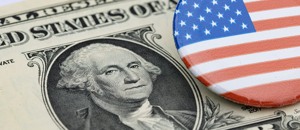Tavex uses cookies to ensure website functionality and improve your user experience. Collecting data from cookies helps us provide the best experience for you, keeps your account secure and allows us to personalise advert content. You can find out more in our cookie policy.
Please select what cookies you allow us to use
Cookies are small files of letters and digits downloaded and saved on your computer or another device (for instance, a mobile phone, a tablet) and saved in your browser while you visit a website. They can be used to track the pages you visit on the website, save the information you enter or remember your preferences such as language settings as long as you’re browsing the website.
| Cookie name | Cookie description | Cookie duration |
|---|---|---|
| tavex_cookie_consent | Stores cookie consent options selected | 60 weeks |
| tavex_customer | Tavex customer ID | 30 days |
| wp-wpml_current_language | Stores selected language | 1 day |
| AWSALB | AWS ALB sticky session cookie | 6 days |
| AWSALBCORS | AWS ALB sticky session cookie | 6 days |
| NO_CACHE | Used to disable page caching | 1 day |
| PHPSESSID | Identifier for PHP session | Session |
| latest_news | Helps to keep notifications relevant by storing the latest news shown | 29 days |
| latest_news_flash | Helps to keep notifications relevant by storing the latest news shown | 29 days |
| tavex_recently_viewed_products | List of recently viewed products | 1 day |
| tavex_compare_amount | Number of items in product comparison view | 1 day |
| Cookie name | Cookie description | Cookie duration |
|---|---|---|
| chart-widget-tab-*-*-* | Remembers last chart options (i.e currency, time period, etc) | 29 days |
| archive_layout | Stores selected product layout on category pages | 1 day |
| Cookie name | Cookie description | Cookie duration |
|---|---|---|
| cartstack.com-* | Used for tracking abandoned shopping carts | 1 year |
| _omappvp | Used by OptinMonster for determining new vs. returning visitors. Expires in 11 years | 11 years |
| _omappvs | Used by OptinMonster for determining when a new visitor becomes a returning visitor | Session |
| om* | Used by OptinMonster to track interactions with campaigns | Persistent |
| Cookie name | Cookie description | Cookie duration |
|---|---|---|
| _ga | Used to distinguish users | 2 years |
| _gid | Used to distinguish users | 24 hours |
| _ga_* | Used to persist session state | 2 years |
| _gac_* | Contains campaign related information | 90 days |
| _gat_gtag_* | Used to throttle request rate | 1 minute |
| _fbc | Facebook advertisement cookie | 2 years |
| _fbp | Facebook cookie for distinguishing unique users | 2 years |
Finnish Economist Who Predicted the Spring Banking Crisis:"New Bank Runs are Coming"

Tuomas Malinen, a Finnish economist who predicted a spring banking crisis as early as last autumn, believes we are in for another round of the banking crisis.
Tuomas Malinen wrote the following opinion piece for The Epoch Times:
“I predicted a banking crisis at the beginning of October last year. My warning was based on the fact that at the time, British pension funds were on the verge of failing. Only the swift action of the Bank of England saved them. My warning was also based on research into the European banking system.
In fact, we predicted a banking crisis in Europe as early as May 2020, which was then postponed by extraordinary measures by the authorities and debt maturities being extended. All of these measures kept the banking systems in the United States and Europe running for nearly three years. Then came the failures of financial institutions such as Silicon Valley Bank, Signature Bank, First Republic Bank, and the venerable Swiss banking giant Credit Suisse.
The only mistake in my warning was believing that Europe would be the epicentre of the coming banking crisis.
This was based on the assumption that European banks would be severely impacted by a wave of corporate bankruptcies, owing primarily to rapid inflation, rising energy prices, and a sharp increase in interest rates.
Fortunately, Europe experienced an unusually warm winter, easing the energy crisis and saving both the economy and the banks. The wave of corporate bankruptcies has been delayed. At the same time, the number of corporate bankruptcies in Europe increased in the second quarter for the sixth consecutive quarter. There has been no such trend since Eurostat began collecting data in 2015. Europe and the European banking sector are about to enter a bleak winter. A wave of bankruptcies is on the way.
In this regard, the US banking sector concerns me the most. According to the in-depth analysis I’ve been compiling since the end of February, the risk of a banking sector collapse in the United States is the highest since the Great Depression. We are currently mapping the safest and riskiest banks in the United States”
When the Authorities Made a Mistake
Tuomas Malinen wrote at the beginning of October:
Banks are now being severely impacted by the decline in the value of the government bonds used as collateral
This could set off a chain reaction of losses for banks. The magnitude, scale, and speed of the losses may be unprecedented in history.
We Know That This Happened in the United States in the Spring. But How Did we Arrive Here?

The Basel Committee on Banking Supervision (BCBS) is the world’s commercial bank regulator. It is a subsidiary of the Bank for International Settlements (BIS). Because it issues instructions to central banks, the BIS is often referred to as the central bank of central banks. Following the 2008 global financial crisis, the Basel Committee issued Basel III, or the banking regulatory framework, which is based on international agreements.
The Liquid Coverage Ratio (LCR)
The creation of the liquidity coverage ratio (LCR) was the most pivotal and destructive part of this. It was supposed to ensure that “banks hold enough liquid assets to prevent central banks from becoming flyers of first resort,” according to central bank governors and the watchdog GHOS. According to the Basel Committee’s liquidity rules, US Treasury bonds are among the safest and most liquid assets.
While the Federal Reserve has yet to fully implement the LCR rules, speculation about their arrival began in October 2013. Then, from 1 January 2015 to 1 January 2017, a transition period was proposed.
Despite the fact that the LCR has not been fully implemented in the United States, it is likely to have had an impact on banks’ risk management.
They were aware that these rules would be implemented. Furthermore, the Basel II regulatory framework, which was implemented in 2008, established different risk weights for bank capital, with US Treasuries receiving the lowest risk weight. All of these guidelines essentially meant that US Treasuries, in addition to money and central bank reserves, began to be preferred as bank capital.
Because the amount of cash and coins (M1) and central bank reserves is relatively limited and under the control of the central bank, US banks began to accumulate US Treasury bonds. The goal is to mitigate the risks associated with the rapid inflow of deposits. Silicon Valley Bank’s executives essentially did what the authorities demanded. And as a result, the bank failed, and there was the collapse of silicon valley.
Deposits Have Increased Dramatically

Over the last three years, bank deposits in the United States have increased dramatically. This is especially true for easily accessible demand deposits, from which funds can be withdrawn at any time.
Why did demand deposits skyrocket between 2020 and 2022?
This was due to a combination of coronet crisis constraints, people’s money, and Federal Reserve money printing.
People didn’t have many options to use (consume) their money when the US economy was shut down several times in 2020 and 2021. Much of the government’s money was not spent and instead accumulated in household bank accounts. On the basis of these, banks made large loans to private companies.
Furthermore, the Federal Reserve conducted its largest money printing operation in history, increasing its balance sheet from $4 trillion to $7 trillion in just four months
The amount of money in circulation in the United States increased dramatically.
The increase in money in circulation fueled the inflation I predicted when the US economy reopened in March 2021. As a result, the Federal Reserve decided to begin the most aggressive interest rate hike in history in April 2022. The base rate rose from 0.08% to more than 5% in just over a year. As a natural result, US Treasury yields increased. Bond yields and bond prices are inversely related, which created a problem for banks. The lower the bond price, the higher the yield, and vice versa. This is an excellent explanation of how this maths works.
The banks were devastated by the extremely rapid rise in government bond yields. In just two years, the yield on US 2-year Treasuries, for example, has increased 20-fold. This means that the underlying bond’s value collapsed, and the banks that had been buying bonds at zero interest rates (bond prices were very high at the time) suffered significant losses.
These were classified as ‘unrealised’ losses because banks purchase government bonds with the intent of holding them until maturity (the bond matures). The Ministry of Finance repays the principal and interest on the bond when it matures. As a result, there is no’real loss’ unless the banks are forced to sell the bonds before they mature. But that is precisely what occurred.
The ‘quiet’ bank run in the United States had already begun in the summer of 2022, when savers began withdrawing money from banks and putting it into money market funds, which offered higher returns than bank accounts. This erupted into a mass exodus in March. Withdrawals had depleted banks’ cash reserves and liquid assets, forcing them to sell government bonds at a loss. When word got out that the SVB had lost a lot of money on such sales, panic ensued.
“It was estimated that US banks had unrealised losses of around $2 trillion by the end of 2022.”
The sheer magnitude of the unrealised losses was one of the reasons why the SVB panic began to spread, prompting US authorities to intervene aggressively.
The Authorities’ Panicked Reaction

The SVB bank run began on March 10, 2023. Two days later, US authorities concluded that a nationwide bank run was possible. To put a stop to it, they devised a three-pronged national strategy.
#1. A Joint Statement
First, the Treasury Department, the Federal Deposit Insurance Corporation (FDIC), and the Federal Reserve issued a joint statement guaranteeing all SVB and Signature Bank deposits.
#2 Injection of Funds
Second, the Federal Reserve injected $300 billion into the banking system and announced the establishment of a funding programme (BTFP) to make it easier for banks to obtain funds.
#3 Public Statement
Furthermore, President Joe Biden stated on national television that bank deposits are secure. Such moves confirmed that the United States was experiencing a nationwide bank run.
The collapse of Credit Suisse in Europe exemplified Europe’s banking problems. The’merger’ of Credit Suisse and UBS (a forced merger by Swiss authorities) calmed things down in Europe. Nonetheless, the crisis resurfaced at the end of April when another US regional bank, First Republic Bank, declared bankruptcy. This bank’s unfortunate demise provides important clues as to where the crisis is headed.
The Banks’ Death Traps
The BTFP evolved into a “deposit guarantee scheme,” with US banks borrowing more and more 1-year loans from the Fed on a weekly basis. To be sure, loan growth has slowed somewhat. The programme is scheduled to end in March 2024, but it will almost certainly be extended indefinitely.
The amount of money that banks can borrow through the BTFP is limited. To qualify for a loan, banks must have collateral – some liquid asset, such as US Treasuries. Many banks lack sufficient such assets. Smaller banks, in particular, that follow a traditional banking model in which the balance sheet balances deposit inflows and loan outflows.

Because its balance sheet was dominated by loans, First Republic Bank received only $13 billion in loans through the BTFP programme. Simultaneously, SVB was purchasing US Treasury bonds to offset the increase in deposits. Both strategies eventually resulted in bank failure, sending a serious warning signal about the US regional banking system. Both the traditional banking model (lending against deposits) and the imposed model (buying government bonds on the balance sheet) have essentially become a death trap for banks.
And, while overall liquidity in the US banking system increased in the first and second quarters of this year, so did its standard deviation [liquidity differentials across banks]. This means that, when compared to the first quarter, the number of banks with smaller liquidity buffers and, as a result, a higher risk of default increased in the second quarter. When we compare the current situation to history, we can see that the risk of the entire banking sector collapsing is very high.
Will The Banking Sector Fail?

Continental Illinois National Bank and Trust, the seventh largest commercial bank in the United States, failed in 1984. This was because of bad loans acquired from the bankrupt Penn Square Bank. This resulted in a bank run, with 30% of deposits withdrawn from the Illinois bank.
According to data released at the end of the second quarter, such a run (30 percent of deposits withdrawn) would result in the failure of 2,800 banks (4,642 deposit-taking banks are listed in the FDIC database). It is worth noting that SVB withdrawn 87 percent of deposits, Silvergate 52 percent, and Signature Bank 29 percent.
Smaller regional banks in the United States have made nearly USD 2 trillion in real estate loans, accounting for the vast majority of their loan originations. Since the beginning of 2020, regional banks have seen a 35% increase in such loans. The volume of these loans has increased by up to 147% since the bottoms in 2011. As we all know, many US cities have been hit by the’retail apocalypse,’ which is only going to get worse as the recession deepens. And a recession is almost certainly on the way. The First Republic bank crash demonstrates that banks are unable to liquidate these loans.
And the issue is quite serious. For example, real estate loans accounted for 80% of First Republic’s loan portfolio.They were losing money on their loan portfolio, and they didn’t have enough liquidity to cover the deposit outflow. As a result, the bank went bankrupt. There are hundreds of banks in the United States that have a greater proportion of real estate loans in their loan portfolio than First Republic. Furthermore, thousands of banks would be unable to handle a bank run on the scale of Continental Illinois.
The accumulation of loan losses on bank balance sheets is likely to spark a new wave of bank runs, resulting in the failure of many US banks and banking services. In the worst-case scenario, the US banking system will collapse completely.

















